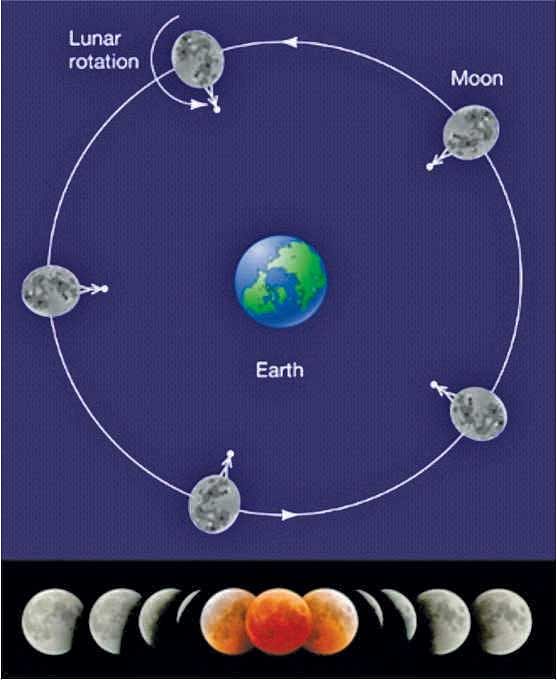WOBBLING AND NODDING OF THE MOON

The Moon takes the same time (27.3 days) to rotate once on its axis as it takes to orbit the Earth. This is called synchronous rotation. Does this mean we always see the same face of the Moon, and hence, only 50 percent of its surface? No, this simple picture of lunar motion is not quite correct. Over the course of a lunar cycle, there is an apparent wobbling and nodding of the Moon, collectively called libration, which allows us to see additional 9 percent of the lunar surface.
The term libration comes from Libra, Latin for scales. It refers to the effects that enable us to take a "peek around the edge"of an object. There are various kinds of lunar libration, but the three significant ones are libration in longitude, libration in latitude and diurnal libration.
Libration in Longitude
It is an effect of the Moon's non-uniform speed along its elliptic orbit around the Earth. The orbital speed increases as the Moon approaches the perigee which is the point closest to the Earth. It decreases as it recedes from the perigee and approaches the apogee, the point farthest from the Earth. This wouldn't be the case if the orbit were circular. Its orbital speed, in that case, would remain the same. However, Moon's rotational speed remains constant during the entire orbital motion.
The increase in speed as the Moon approaches the perigee makes it move in its orbit ahead of its rotation, while the decrease in speed as it moves away from the perigee causes its rotational speed to move ahead of its orbital speed. The net result is the Moon appears to wobble back and forth by 7 degrees in the east-west direction around its rotation axis, thereby allowing us to get a glimpse of its leading edge when it is approaching the perigee and a glimpse of the trailing edge when it is moving away from the perigee.


Libration in Latitude
It is due to the fact that the Moon's rotational axis is not perpendicular to its orbital plane; it is tilted by 1.5 degrees. Furthermore, Moon's orbital plane is inclined to the Earth's orbital plane by about 5 degrees. Taken together, these inclinations mean we can at one time see 6.5 degrees over the Moon's North Pole, and then later in the lunar cycle 6.5 degrees over the South Pole. The Moon, therefore, appears to nod up and down in a north-south direction.
Diurnal Libration
The difference in perspective from an observer's point of view between the rising and setting of the Moon caused by the Earth's rotational motion leads to diurnal libration. When the Moon rises in the east, we see one degree more of the Moon's eastern edge and one degree more around the western edge when it sets.
Because of the combined effect of the three librations, we can see about 59 percent of the lunar surface. At any time though, only half of the lunar surface is visible from Earth.
Fortunately, our planet does not wobble or nod because of the wonderfully symbiotic relationship we have with the Moon. But billions of years from now, when the Moon will recede to the point where it will appear suspended in the sky, when there will be no eclipses, this relationship will end. The quiescent mystical object, once our friendly but eccentric neighbor, will then become our greatest tormentor.
The writer is Professor of Physics at Fordham University, New York.

 For all latest news, follow The Daily Star's Google News channel.
For all latest news, follow The Daily Star's Google News channel. 



Comments